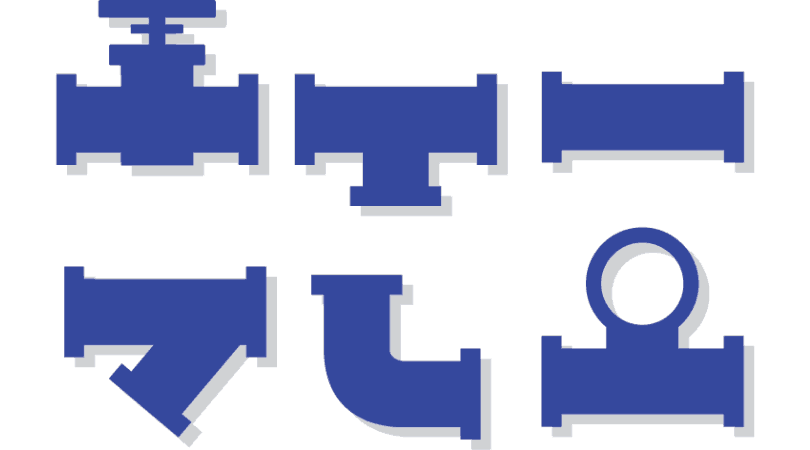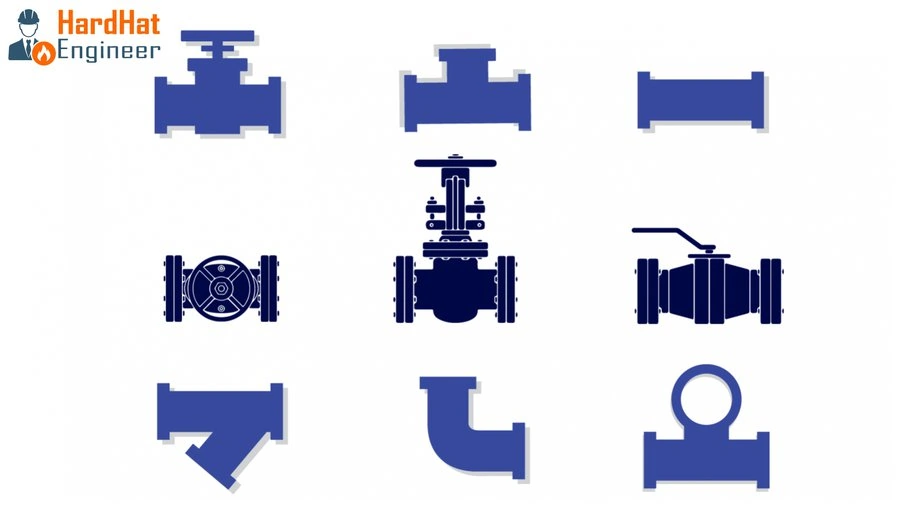Welcome to Hardhatengineer.com. I am Varun Patel. In this video, you will learn about the most common questions regarding code and standards that you may face during the interview.
You will learn about these piping interview questions;
- Which code and standard are used in Oil and Gas?
- Which code is used for process piping and power piping?
- What are the most commonly used ASME Sections?
So please watch these videos till the end. And don’t forget to subscribe to my channel; that way, you will get regular updates on new videos. You can subscribe right now by just clicking the subscribe button on your screen. So let’s start with the first question.
Which code and standard are used in Oil and Gas?
If you are working in Oil and Gas, then the most commonly used code and standard are developed by various American institutes. Some of them that you can include in your answer are;
- ASME Codes – ASME is the American Society of Mechanical Engineers. ASME Published various designed codes and dimension standards that are used in refineries, petrochemical plants, and power plants.
- ASTM Standard – ASTM is the American Society for Testing and materials. ASTM published various material standards used in almost all industries. ASTM has published 15 sections out of these; only section 1, section 2, and section 3 are used very frequently in the process industry. Within these sections, different volumes cover various materials. For example, Section 1 has eight volumes, section 2 has five volumes, and section 3 has six volumes.
- API Standard and Recommended Practice – API is American Petroleum Institute that published Standard and Recommended Practices that are used in petroleum. This is an industry-specific institute, whereas ASME and ASTM also published standards and codes used in general applications. Recommended practices are used in operation and maintenance of the process facilities.
- AWS – AWS is an American welding society. As the name suggests, AWS published various codes and standards that use for welding. ASME Section IX is also used to develop different welding procedures used in a process What I have seen is AWS codes used in the structural applications more than the process application as most process piping and equipment are designed using ASME Code and Standard, so they follow ASME Section IX for the welding.
- AWWA – AWWA is the American Water Works Association. The standard published by AWWA is used in a process plant for water treatment facilities and water transport pipelines.
These are some of the well-known American Standard and Codes that are regularly used in any process facilities such as refineries, petrochemical plants, and offshore and onshore oil production facilities.
I believe you know what code and standards are. If not, you can check my earlier video on what is code, standards, and specifications. You can watch that video to learn the difference between these three terms. The next question is.
Which code is used for process piping and power piping?
To answer this question, you must know the code ASME published under the B31 series. ASME B31 series covers various codes used for different pressure piping types. The list of codes currently offered by ASME under the B31 series is as under;
- ASME B31.1 – Power Piping.
- ASME B31.3 – Process Piping.
- ASME B31.4 – Pipeline Transportation Systems for Liquids and Slurries.
- ASME B31.5 – Refrigeration Piping.
- ASME B31.8 – Gas transmission & distribution piping system.
- ASME B31.9 – Building services piping.
- ASME B31.12 – Hydrogen Piping and Pipelines
Out of this list, Power Piping and Process Piping are very important if you are working in the Oil and Gas and energy industries.
So, there may be an additional question like what is covered in the Power Piping and Process Piping.
Piping Component Quiz – Test yourself, Take This Quiz
Unlock New Skills with Our Best Selling Online Courses
Let’s see the scope of Power Piping and Process Piping.
- ASME B31.1 – Power Piping covers piping typically found in electric power generating stations, industrial and institutional plants, geothermal heating systems, and central and district heating and cooling systems dealing with steam.
- You have to note that this Code covers only external boiler piping with high temperature, high-pressure water boilers in which steam or vapor is generated at a pressure of more than 15 psi; and high-temperature water is generated at pressures exceeding 160 psi and/or temperatures exceeding 120°C.
- ASME B31.3 – Process piping that covers piping typically found in petroleum refineries; chemical, pharmaceutical, textile, paper, semiconductor, and cryogenic plants; and related processing plants and terminals that handle various fluids, including hydrocarbon liquid and gases.
Let’s move to the next question.
What are the most commonly used ASME Sections?
Here is the list of most commonly used ASME sections;
- ASME Section I: – Rules for construction of power boiler.
- ASME Section II: – Materials.
- Part A – Ferrous materials.
- Part B – Non-Ferrous materials.
- Part C – Specification for electrodes & filler wire.
- Part D – Properties.
- ASME Section IV: – Rules for construction of Heating Boiler.
- ASME Section V : – Non- destructive Examination.
- ASME Section VI: – Recommended rules for care & operation of heating Boiler.
- ASME Section VII: – Recommended guidelines for the care of power boiler.
- ASME Section VIII: – Rules for construction of pressure vessels. (Division I, II & III)
- ASME Section IX: – Welding & Brazing qualification.
Out of this list, ASME Section II, Section V, Section VIII, and Section IX are most commonly used in the Oil and Gas industries. Section II gives you the materials, their properties, and a list of electrodes and wires used to weld metallic material.
Section V will give you the guidelines and procedure for how to conduct non-destructive testing such as Ultrasonic Testing, Radiography Testing, Liquid Penetrant, Magnetic Particle, eddy current, and visual Examination.
Section VII has three divisions that cover rules for the construction of pressure vessels used in industries. Division 1 is Rules for Construction of Pressure Vessels. Division 2 is an alternative Rule, and Division 3 is an alternative Rule for the Construction of High-Pressure Vessels.
Section IX is used to establish a welding producer that is WPS and welder qualification requirements.
This is the end of the video. In the next video, I will explain a few more piping interview questions about the material, dimensional code, and standards for piping components.
Visit my website hardhatengineer.com for free study materials and don’t forget to subscribe to my channel to get regular updates on new videos and also like and share my video with your friends. If you want to request a video, please write in the comment. See you soon, goodbye, take care.
Are You Piping Components Master?



